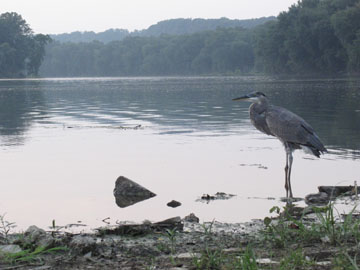Ecology

Photo by Christine Lopez
From an ecological standpoint, the canal is of incalculable value to the health of the Potomac River and, by extension, the Chesapeake Bay. The best way to protect the water quality of a river or stream is to protect the land around it from development, and the park provides a natural buffer along more than half of the entire length of the Maryland side of the river.
The vegetative cover helps to filter and slow down the precipitation that runs off neighboring roads, parking lots, fields, and rooftops on its way to the river. Because the riverfront forest has regenerated in the years since the park was established, it now provides tremendous habitat for birds, mammals, amphibians, and reptiles. The Park is also home to one of the east coast’s biodiversity “hotspots”: the Potomac Gorge. The Gorge is home to over 1,500 species, including nearly 200 that are listed as rare, threatened, or endangered. The ecological health and wealth of the river corridor is only possible by virtue of the park.
In addition, as a model of a largely intact riparian (riverside) forest buffer, the canal provides an incomparable scenic amenity to the people of the region. Potomac Conservancy has long called the Potomac River the “wildest urban river in the world” thanks to the abundance of trees found up and down the river corridor. Both Scenic Maryland and Scenic America have identified the Potomac River corridor, and the C&O Canal NHP, as a scenic treasure requiring constant public vigilance to protect it from potential encroachments.





